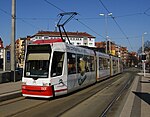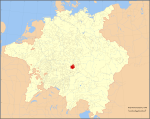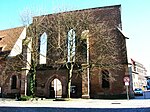Jesuitenmission
Catholic Church in GermanyCharities based in GermanyChristian refugee aid organizationsCultural promotion organizationsInternational educational charities ... and 4 more
Jesuit development centresNon-profit organisations based in BavariaPeace organizationsSocial welfare charities
Jesuitenmission, the mission arm of the Society of Jesus in Germany, directs its assistance to the German Jesuit foreign missions, mainly in India, East Timor, China, and Zimbabwe. Pursuing the service of faith and promotion of justice, its works include combating poverty, refugee assistance, education, health, ecology, human rights and pastoral work, while fostering dialogue between cultures and religions.
Excerpt from the Wikipedia article Jesuitenmission (License: CC BY-SA 3.0, Authors).Jesuitenmission
Königstraße, Nuremberg Altstadt, St. Lorenz
Geographical coordinates (GPS) Address Nearby Places Show on map
Geographical coordinates (GPS)
| Latitude | Longitude |
|---|---|
| N 49.448683333333 ° | E 11.079841666667 ° |
Address
St. Klara
Königstraße 66
90402 Nuremberg, Altstadt, St. Lorenz
Bavaria, Germany
Open on Google Maps











